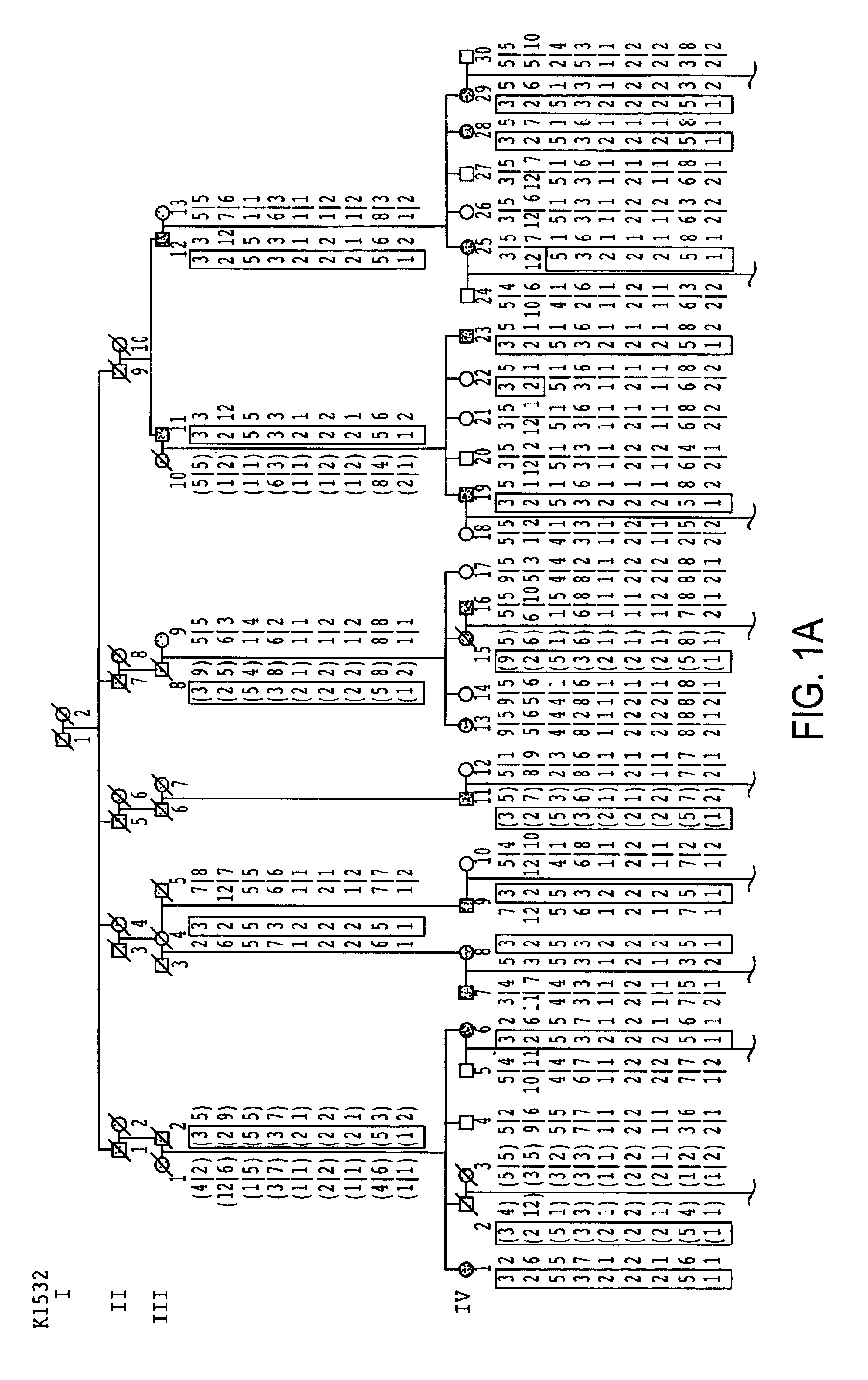KVLQT1—a long QT syndrome gene
- Summary
- Abstract
- Description
- Claims
- Application Information
AI Technical Summary
Benefits of technology
Problems solved by technology
Method used
Image
Examples
example 1
Methods for Phenotypic Evaluation
[0225]For these studies, six large LQT kindreds (K1532, K1723, K2605, K1807, K161 and K162) as well as some small kindreds and sporadic cases were studied. LQT patients were identified from medical clinics throughout North America and Europe. Two factors were considered for phenotyping: 1) historical data (the presence of syncope, the number of syncopal episodes, the presence of seizures, the age of onset of symptoms, and the occurrence of sudden death); and 2) the QT interval on electrocardiograms corrected for heart rate (QTc) (Bazzett, 1920). To avoid misclassifying individuals, the same conservative approach to phenotypic assignment that was successful in previous studies was used (Keating et al., 1991a; Keating et al., 1991b; Jiang et al., 1994). Informed consent was obtained from each individual, or their guardians, in accordance with local institutional review board guidelines. Phenotypic data were interpreted without knowledge of genotype. Sy...
example 2
Genotyping and Linkage Analysis
[0226]Genomic DNA was prepared from peripheral blood lymphocytes or cell lines derived from Epstein-Barr virus transformed lymphocytes using standard procedures (Anderson and Gusella, 1984). For genotypic analyses, four small tandem repeat (STR) polymorphisms were used that were previously mapped to chromosome 11p15.5: D11S922, TH, D11S1318 and D11S860 (Gyapay et al., 1994). Genotyping of RFLP markers (HRAS1, D11S454 and D11S12) was performed as previously described (Keating et al., 1991a).
[0227]Pairwise linkage analysis was performed using MLINK in LINKAGE v5.1 (Lathrop et al., 1985). Assumed values of 0.90 for penetrance and 0.001 for LQT gene frequency were used. Gene frequency was assumed to be equal between males and females. Male and female recombination frequencies were considered to be equal. STR allele frequencies were 1 / n where n=number of observed alleles. Although the maximum LOD score for D11S454 was identified at a recombination fraction ...
example 3
[0228]Primers were designed based on sequences from TH-INS-IGFII and D11S454 loci and used to identify and isolate clones from CEPH YAC libraries using the PCR based technique (Green and Olson, 1990; Kwiatkowski et al., 1990). YAC terminal sequences were determined by inverse PCR as described (Ochman et al., 1988) and used as STSs.
[0229]P1 clones were isolated using single copy probes from previously identified cosmids cosQW22 (this study), cCI11-469 (D11S679), cCI11-385 (D11S551), cCI11-565 (D11S601), cCI11-237 (D11S454) (Tanigami et al., 1992; Tokino et al., 1991; Sternberg, 1990). Newly isolated P1s were mapped to chromosome 11p15 by FISH or Southern analyses. End-specific riboprobes were generated from newly isolated P1s and used to identify additional adjacent clones (Riboprobe Gemini Core System Kit; Promega). DNA for P1 and cosmid clones was prepared using alkaline lysis plasmid isolation and purified by equilibrium centrifugation in CsCl-ethidium bromide grad...
PUM
| Property | Measurement | Unit |
|---|---|---|
| Fraction | aaaaa | aaaaa |
| Fraction | aaaaa | aaaaa |
| Fraction | aaaaa | aaaaa |
Abstract
Description
Claims
Application Information
 Login to View More
Login to View More - R&D
- Intellectual Property
- Life Sciences
- Materials
- Tech Scout
- Unparalleled Data Quality
- Higher Quality Content
- 60% Fewer Hallucinations
Browse by: Latest US Patents, China's latest patents, Technical Efficacy Thesaurus, Application Domain, Technology Topic, Popular Technical Reports.
© 2025 PatSnap. All rights reserved.Legal|Privacy policy|Modern Slavery Act Transparency Statement|Sitemap|About US| Contact US: help@patsnap.com



